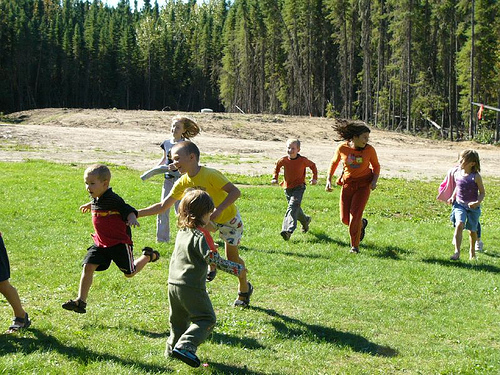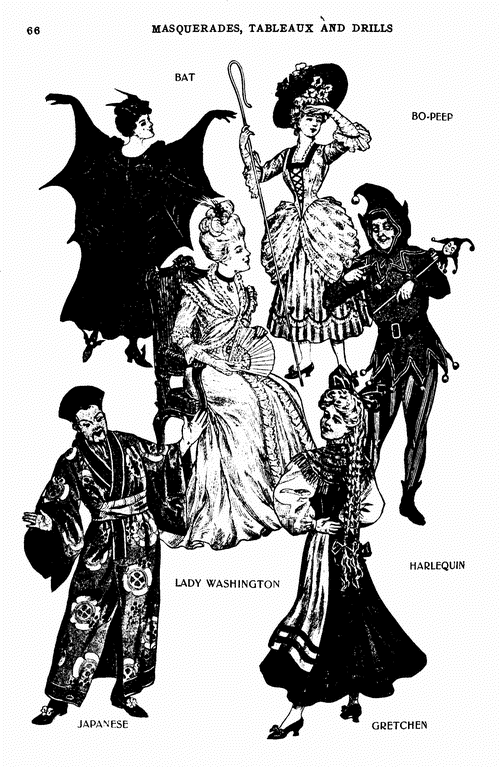
This lack of play and oppression of habit (in the form of circles, etc.) means that we shut down a major means of knowledge and experience acquisition (see The Oppression of Circles). Another aspect of play is social development.
Part of social development – and a main goal of my work – is the nurturing of authenticity and spirit within the rules that make play and fun possible. Going further, the crazy thing about play is that it often isn’t as fun if the players don’t follow the rules. “Tag” isn’t very fun if three of the players are sitting in chairs, talking amongst themselves or if others refuse to move.
So, in terms of social development, play (as in many other things) teaches us how to be ourselves and find freedom and our own authenticity within the rules. In play, authenticity emerges on impulse, without planning and without self-consciousness. It is also a means to teach a fundamental principle of socialization: giving and taking freely and within the rules.
I’ve never had a class that wouldn’t try an exercise at least once. That said, I have never asked their permission. But, I’m also very sensitive to the reality that these human beings are different than they were the last time we met. And what worked last week, may not work this week. I stay acutely tuned to where the participants are, who is in the room and why they are there.
Here’s a great exercise, “Give & Take”, to develop impulse, play, agreement and authenticity within the rules:
Point of Concentration: agreement, impulse development, focus and so much more!
Originator: Joyce & Byrne Piven, the Piven Theatre Workshop
Directions:
Round 1.
1. Invite players to move through the space. Calls: Move Up, Down, Right, Left, Crawl, Jump, Kneel
2. Call Freeze. Freezes should be on a dime a la suspension with energy vs. a stoppage.
3. Call each player’s name one at a time. As a player’s name is called, she should move throughout the space creating a repeating, abstract sound and movement. Calls: Stay away from words! Use your whole body! Use the whole space! Breathe! Find the sound and Keep going until I call another player’s name!
4. Call another player’s name. Player 1 freezes. Calls: No movement! Every eyelash and every blink counts!
5. At some point, probably before everyone has created an abstract sound and movement, freeze them again. Explain that they are to Carry on until every player has moved throughout the space as you call.
Round 2 – Give
1.Same as above, except that now the game is only Give. Players are to Give only (and not take).
2. Players ‘give’ the energy and focus to another player by freezing with eye contact and a “throw” of energy. Players that are given to in the game, take the energy “thrown” to them and – on impulse – use that energy to make their own repeating, abstract sound and movement. Calls: Take the energy given! Don’t think about it! On impulse! Create your own sound and movement!
3. After everyone has been given to, move to Round 3.
Round 3 – Take
1. Same as Round 1 except that now the game is only Take. Players are to Take only (and not Give).
2. Players take focus with a strong, repeating abstract sound and movement. Another player may take back at any time. Calls: It is not a game of politeness! How strongly can you take? Take Strong! Take back at any time! Just because you were taken from doesn’t mean you can’t take back.
3. After everyone has been taken from, move to Round 4.
Round 4
1. Same as above, except that now the game is Give and Take . Players are to give and take.
2. Using the techniques of Give from Round 2 and those of Take in Round 3, players Give & Take. Calls: Use your whole body! Get it in your knees, your lower back, your shoulders! Give across the room! Take strongly! Playing isn’t for politeness! and so on.
Extensions; After players are comfortable with basic Give & Take, take them further by inviting them to explore ambiance, environment, sound – all sorts of elements.










